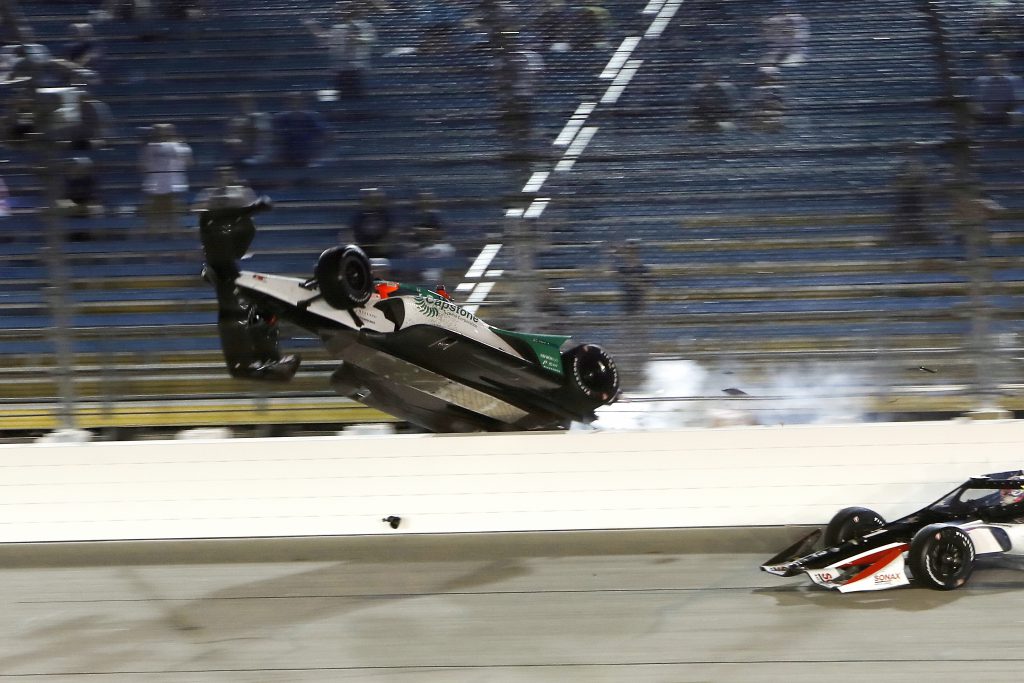Last weekend, IndyCar had its first proper safety test of its new aeroscreen canopy in a racing situation at Iowa Speedway, with no fewer than three incidents all proving potentially life saving in their own way.
Penske’s Will Power crashed into the wall on the outside of Turn 4 after his front-left wheel was not fitted in a pitstop properly. The wheel came off, and after the crash it very nearly hit Power’s car in the cockpit area. With an IndyCar wheel weighing more than 20kg, you don’t need an explanation of how dangerous that could have been.
.@12WillPower has been cleared after this incident.
"I can't thank @IndyCar enough for that Aeroscreen." #INDYCAR #IOWA250s pic.twitter.com/kSc4qnMh0z
— IndyCar on NBC (@IndyCaronNBC) July 18, 2020
Then, just a few laps later, Colton Herta had not been told a green-flag restart had been waved off and he crashed into the back of the slowing Rinus VeeKay, with Herta’s wheel clipping VeeKay’s aeroscreen in mid-air.
As Herta’s car flew through the air, a piece of debris from his nosecone was propelled sideways, and hit the front of Marcus Ericsson’s aeroscreen, in what could have been the scariest of all three scenarios.
An absolutely stunning sight at @iowaspeedway. @ColtonHerta and @RinusVeekay crash coming to an aborted restart, and Herta gets airborne. #INDYCAR // #IOWA250s pic.twitter.com/z8ZtPnvdcc
— IndyCar on NBC (@IndyCaronNBC) July 18, 2020
Stefan Wilson watched on, heart in mouth at the incidents.
The aeroscreen canopy was not well received by many due to the fact that it moves away from the single-seater ethos, almost creating a full canopy like a prototype car. Some established fans weren’t particularly happy with that concept or the way it looks.
Then, for drivers, it was the issue of cooling and the added weight it would create that caused concern.
But Wilson – who is on the comeback trail in a bid to start his third Indianapolis 500 – has been a staunch supporter throughout.
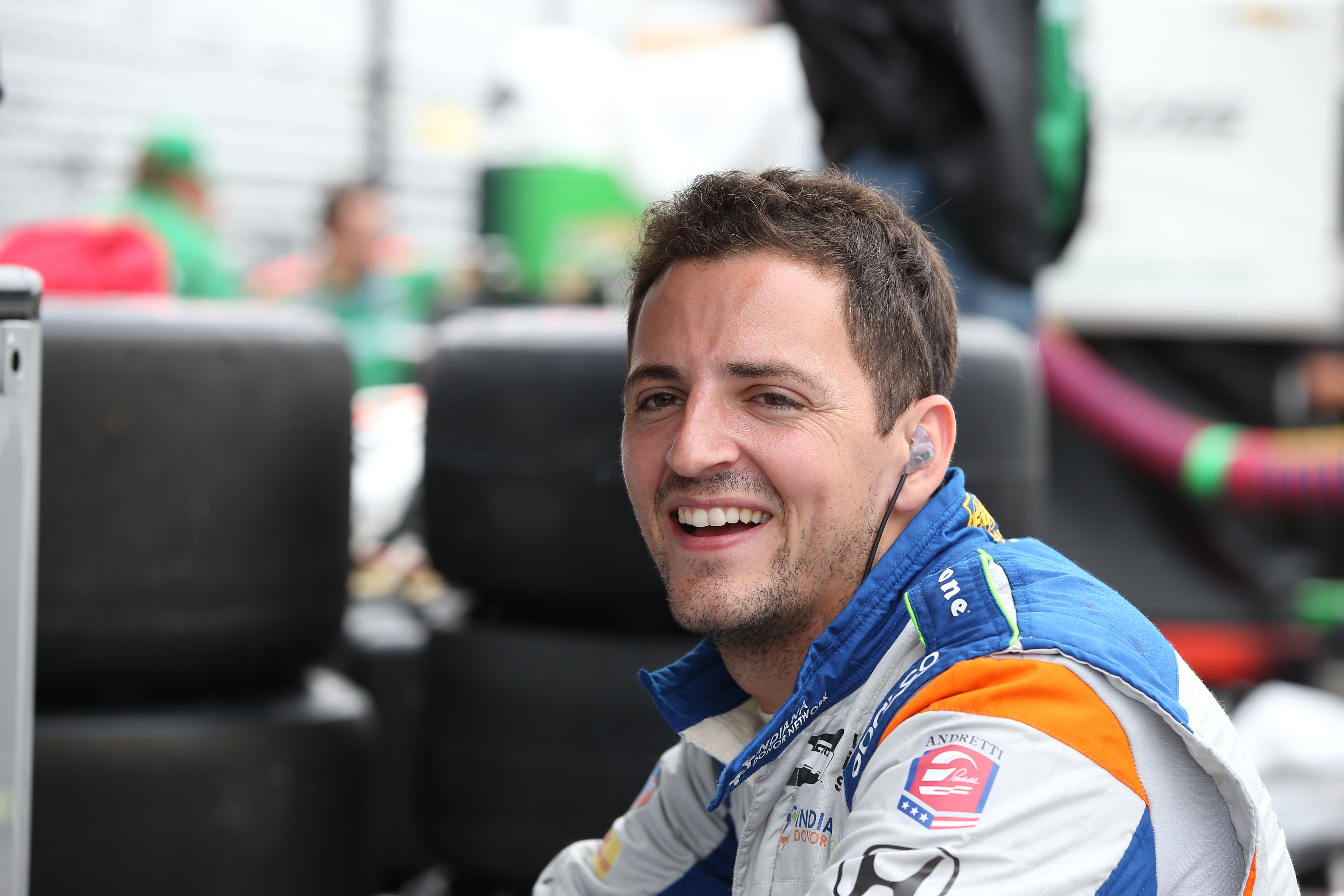
It’s an issue close to home for him, given that his brother Justin passed away after being hit by debris in an IndyCar race at Pocono in 2015.
Stefan says he “didn’t want any other family to experience that same loss” and was part of a groundswell of renewed attention on cockpit safety in open-wheel racing, leading to the halo device in F1 introduced in 2018 and the Red Bull Advanced Technologies-developed aeroscreen in IndyCar in 2020.
Also, so relieved #INDYCAR has the aeroscreen, my stomach always drops seeing a wheel loose like that on a racetrack. This time, I felt confident the drivers were protected. Great job @IndyCar #IndyCar250s
— Stefan Wilson (@stef_wilson) July 18, 2020
“The biggest part for me was watching that race, when you saw Will Power’s wheel fly over. It skimmed the aeroscreen on his car, his own wheel overtook him right above his head,” Wilson told The Race of his feelings when watching the Iowa event.
“It’s those types of incidents where you have a wheel, which is upwards of 50 pounds, flying through the air, the kind of damage and destruction that can do, typically when you see that, or when I see that, my stomach sinks.
“We lost Just not in a racing incident, but it was under yellow – the yellow had already come out, he was starting to slow down” :: Stefan Wilson
“It was the first time when I saw that [I thought] ‘phew, we have the aeroscreen. Look, the drivers are protected’ and I just felt a big relief.
“These are all guys that I know and and I’ve raced against.
“And at the same time, just knowing it from very personally, having the experience I went through when we lost Just, that’s why I was such a big advocate for the aeroscreen.
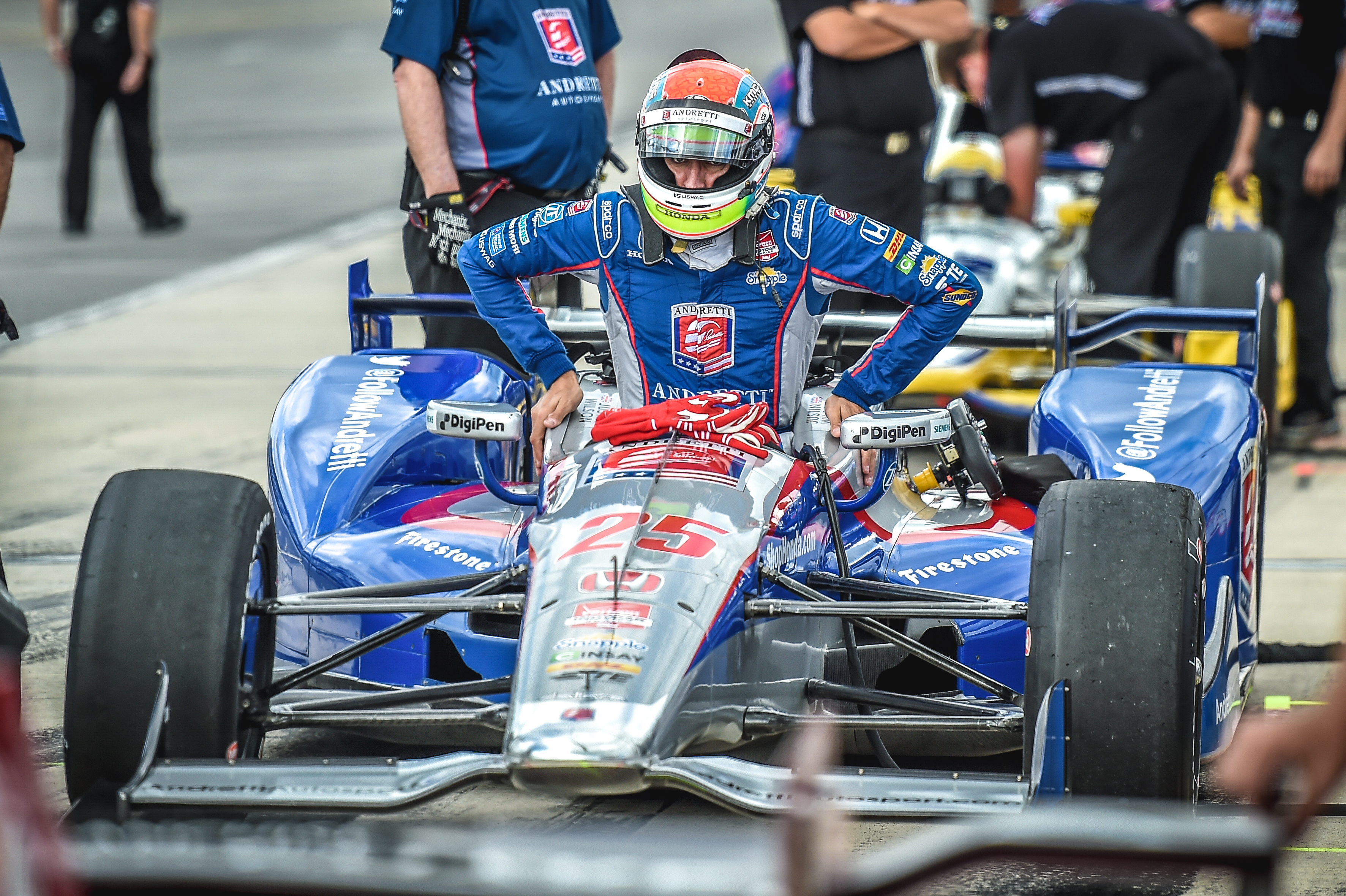
“I didn’t want any other family to experience that same loss that we experienced. It’s easy to be cavalier as a driver and be against the aeroscreen. You see comments like, motorsport’s supposed to be dangerous blah blah blah and all this stuff. But at the same time, there is no harm in making the sport safer.”
Herta and VeeKay were uninjured and discharged from the medical centre almost immediately after their crash, while Ericsson continued on to a fifth straight top five finish.
Wilson’s well-placed to discuss this topic, having felt the loss of Justin and also having raced at this level.
He knows as well as anyone how “vulnerable” drivers in an open cockpit can be to debris, having also seen incidents first hand from the cockpit.
And the thing that is difficult to reconcile as a driver is that incidents can happen at the most inopportune and unusual times. Times that incidents shouldn’t happen, but motorsport is unpredictable. It makes reducing risks all the more important.
“What really struck me losing Just was the fact that we lost Just not in a racing incident, but it was under yellow – the yellow had already come out, he was starting to slow down,” says Stefan.
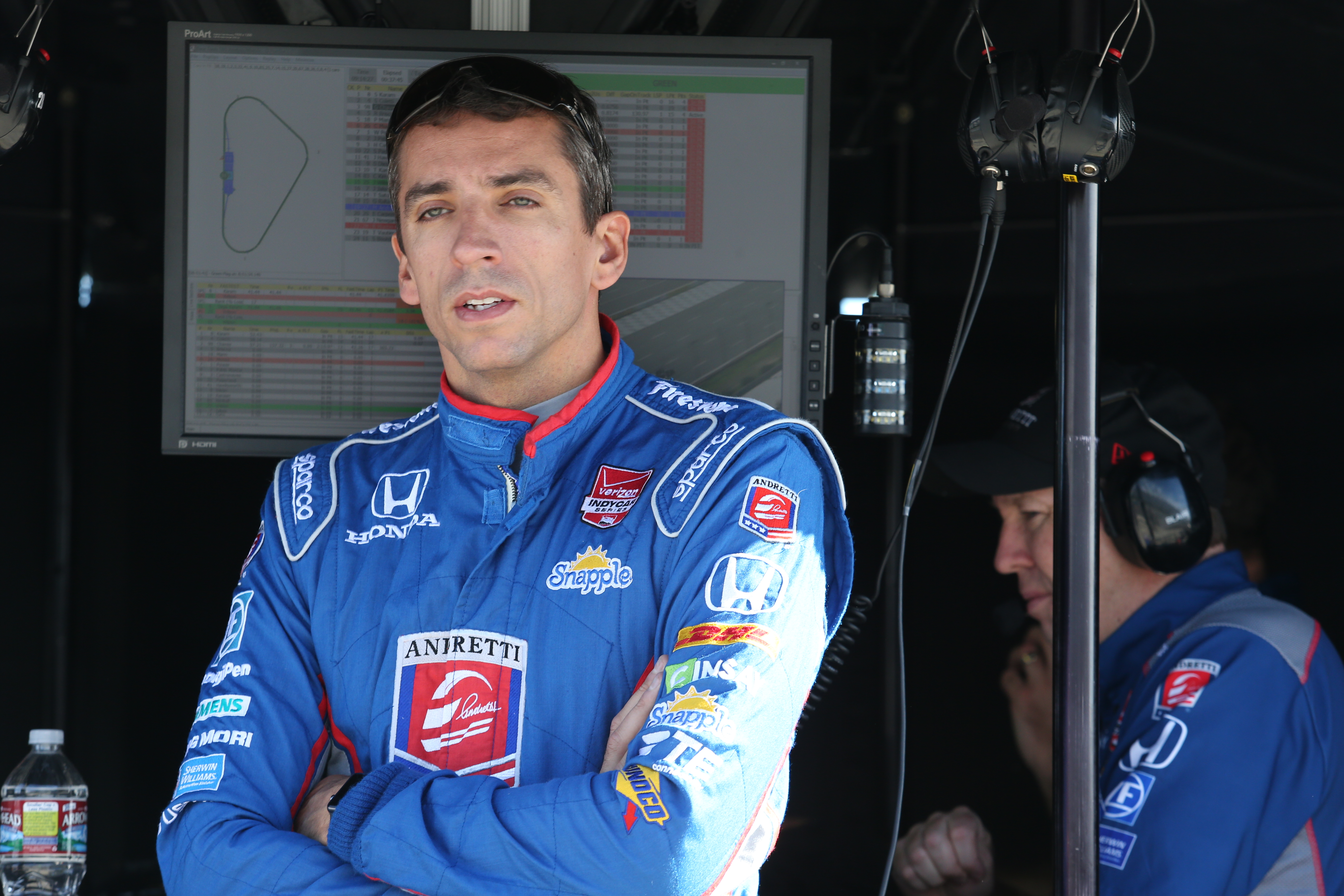
“To be hit by someone else’s debris, it highlights how vulnerable drivers were without the aeroscreen. At the same time it wasn’t a big piece that hit him.
“So, I’m just glad to see this because it was only a matter of time without the aeroscreen where the same thing [would] happen again.
“It’s just an odds game, at some point when these cars crash and the debris goes flying, we’ve had so many near misses over the last several years.
“Watching that wheel fly on Friday’s race, it really hit home how relieved I am to see the aeroscreen implemented.”
The Race says
– Jack Benyon
I have so much respect for Stefan Wilson. I’d never spoken to him before Tuesday, and he knew he was going to get asked some difficult questions surrounding the aeroscreen and the loss of his brother, Justin, in the 2015 Pocono incident.
But Stefan has placed the importance of talking about Justin’s accident to spur change and improve safety above his own emotions and grief. I can’t imagine personally how difficult that must be, but it takes a much stronger person than I am.
Over the weekend, the aptly named ‘Socially Distanced Doug Kuhn’ on Twitter suggested the aeroscreen device should be named after Justin, and honestly, it’s the best thing I’ve read on Twitter in years. Top marks for encouraging social distancing too, Doug.
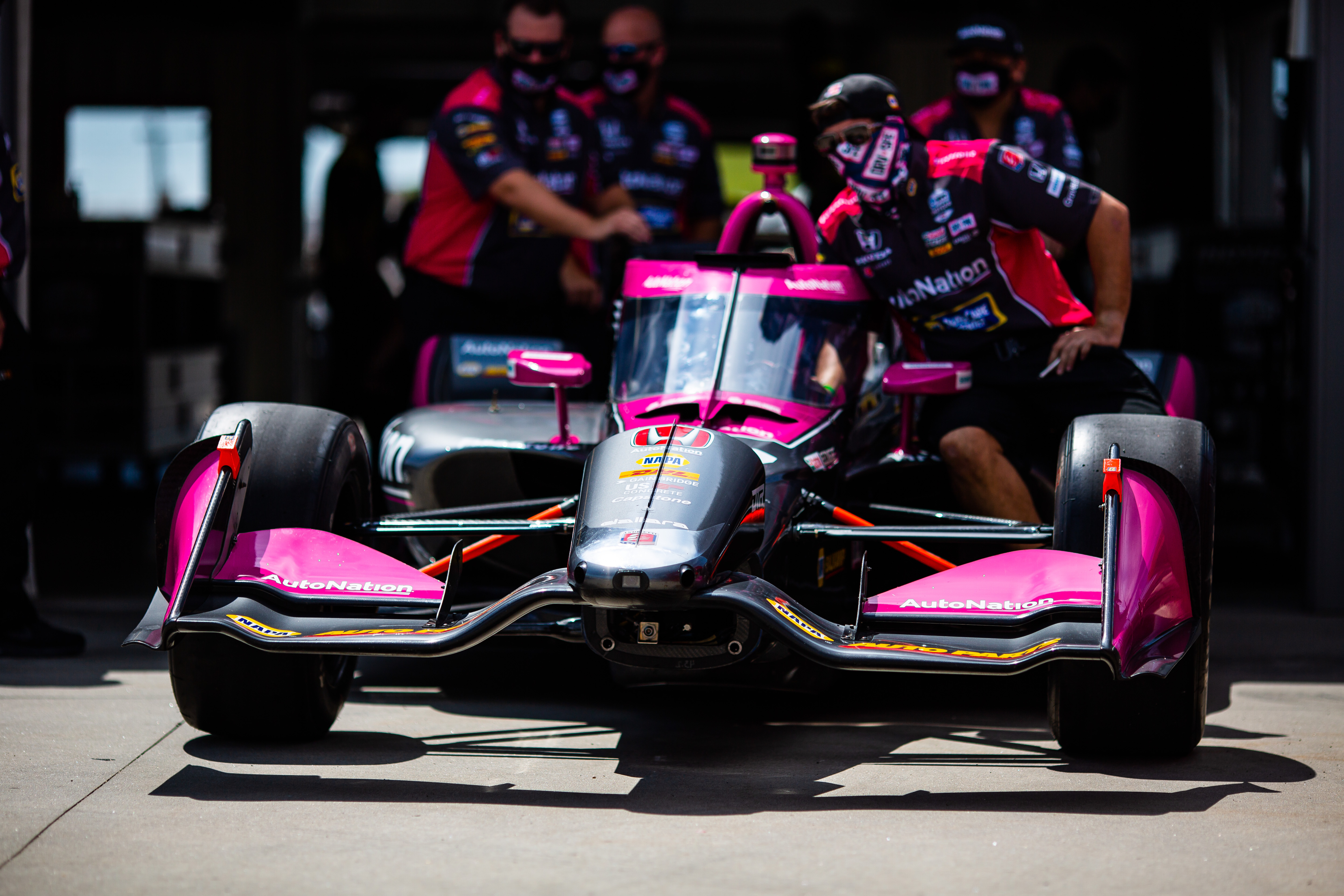
The chassis of the Indycar itself was originally named after Dan Wheldon, who passed away in a crash at Las Vegas in 2011. The DW12, introduced in 2012, featured safety improvements that it was hoped would help stop cars getting airborne in incidents like Wheldon’s.
What better way to mark Wilson’s legacy than by naming the device that will continuously save lives in the future after him, in a similar way to how Wheldon was honoured?
Anyone would give anything to have Justin back. All we can do from his loss is learn lessons and do everything we can to avoid this happening again. The aeroscreen is the physical manifestation of that, and it deserves a fitting name.
Thank you for thinking of Justin. Something like that would be a great tribute to his legacy, he always looked for ways to improve safety in the sport. https://t.co/quCCSciYUU
— Stefan Wilson (@stef_wilson) July 18, 2020
“It’s definitely a nice thought, it’s one that I support for sure,” Stefan Wilson told The Race when I asked him about the naming suggestion. “But at the same time Justin was very humble so I’m not going to push that issue.
“If that’s something IndyCar chooses to do then I’ll be fully supportive of that.
“I think that would be a nice tribute, because I feel like, up until losing Just, it just kind of was a conversation that wasn’t really moving forward and then that really spurred everyone to innovate and come up with this solution.”
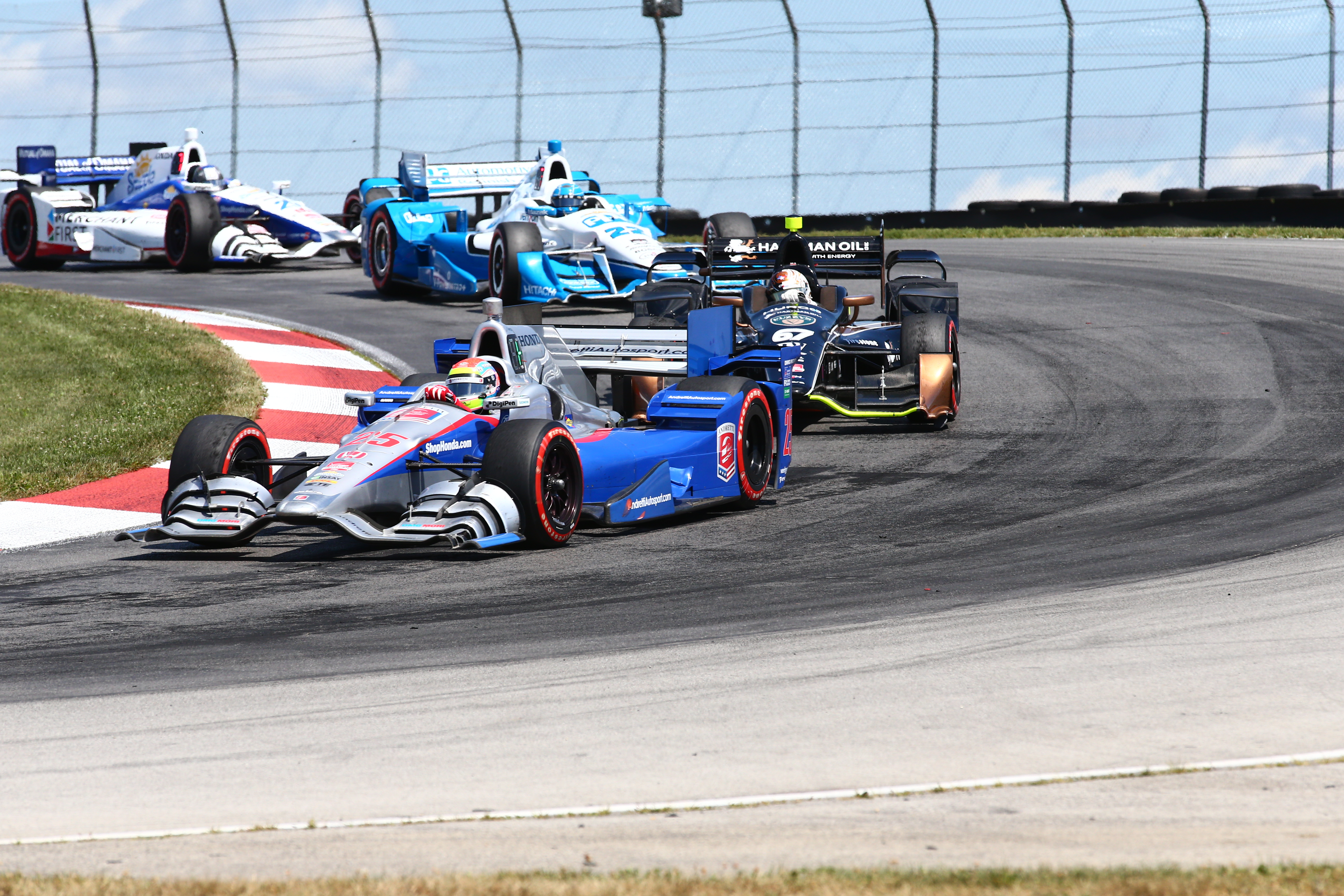
Wilson’s crash really made clear how important head protection is in motorsport, and allowed motorsport to solve that internal battle of people pushing back against devices that change the look of the car.
Now we have the halo and the aeroscreen, which protect the stars we love from danger. I’ll take that over pointless risk because ‘motorsport should be dangerous’. That, in my opinion, is just an idiotic view.
IndyCar, you know what to do. Listen to @OpenWheelDoug and name the aeroscreen after Justin. What a fitting tribute that would be.
The aero screen needs to be named after Justin. Either the JW aero screen, or the Wilson screen.
— Socially Distanced Doug Kuhn (@OpenWheelDoug) July 18, 2020
Will Stefan make the Indy 500?
Stefan Wilson could well experience the aeroscreen from inside the cockpit this year, if he’s successful in securing the last bit of backing needed to fund an Indy 500 entry that he reckons costs around $1million.
His last appearance in IndyCar was in 2018 at the Indy 500, where he eventually finished 15th driving for Andretti Autosport, his standout moment in that race being fighting eventual winner Power to get a lap back. He had made way for Fernando Alonso in the team one year earlier.
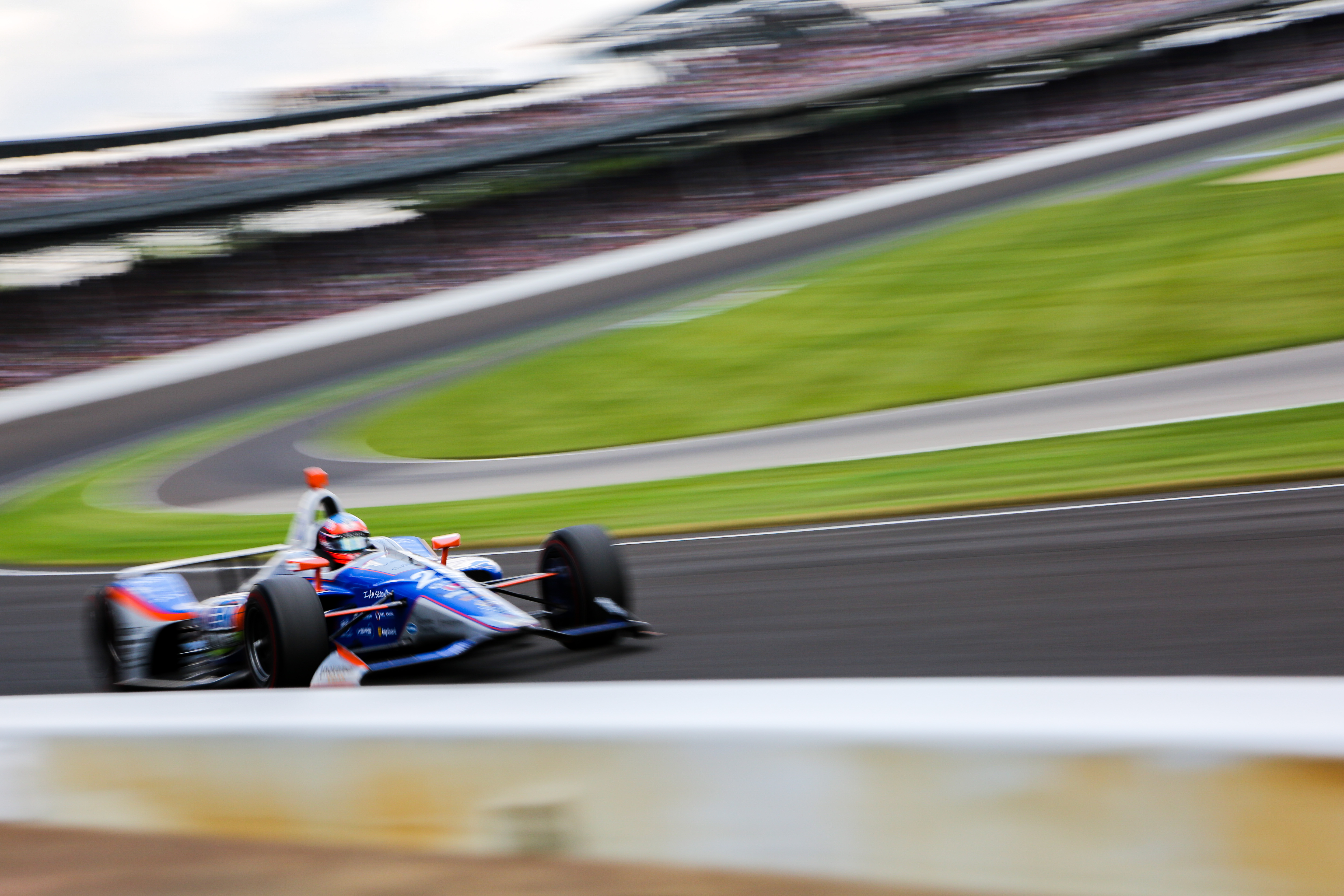
Since that last event, Wilson has been on the comeback trail. A bid for the 2020 event has been both helped and hindered by the coronavirus pandemic. He categorically wouldn’t have made the event if it ran in May, but a delay to August 23 has made it possible although companies have less spare cash to fund racing this difficult and unusual environment.
“It’s not for lack of trying,” adds Wilson. “I’ve been trying to get back to the Indy 500 since 2018 and I knew back then, racing the 500 in 2018, the only real way I was going to secure my way back in and have it guaranteed was if I won that race.
“It’s just it’s such an expensive event. It’s not easy just to go run it. Every year, I’m determined to try and get back there, and I’m working on stuff all the time trying to make it work.
“But right now, it’s hanging in the balance.
“I’ve really worked on our relationship with the Juncos Racing team over the lockdown, represented them in the Indy iRacing Challenge that we did with IndyCar back in early May, and using that to really establish a really good relationship.
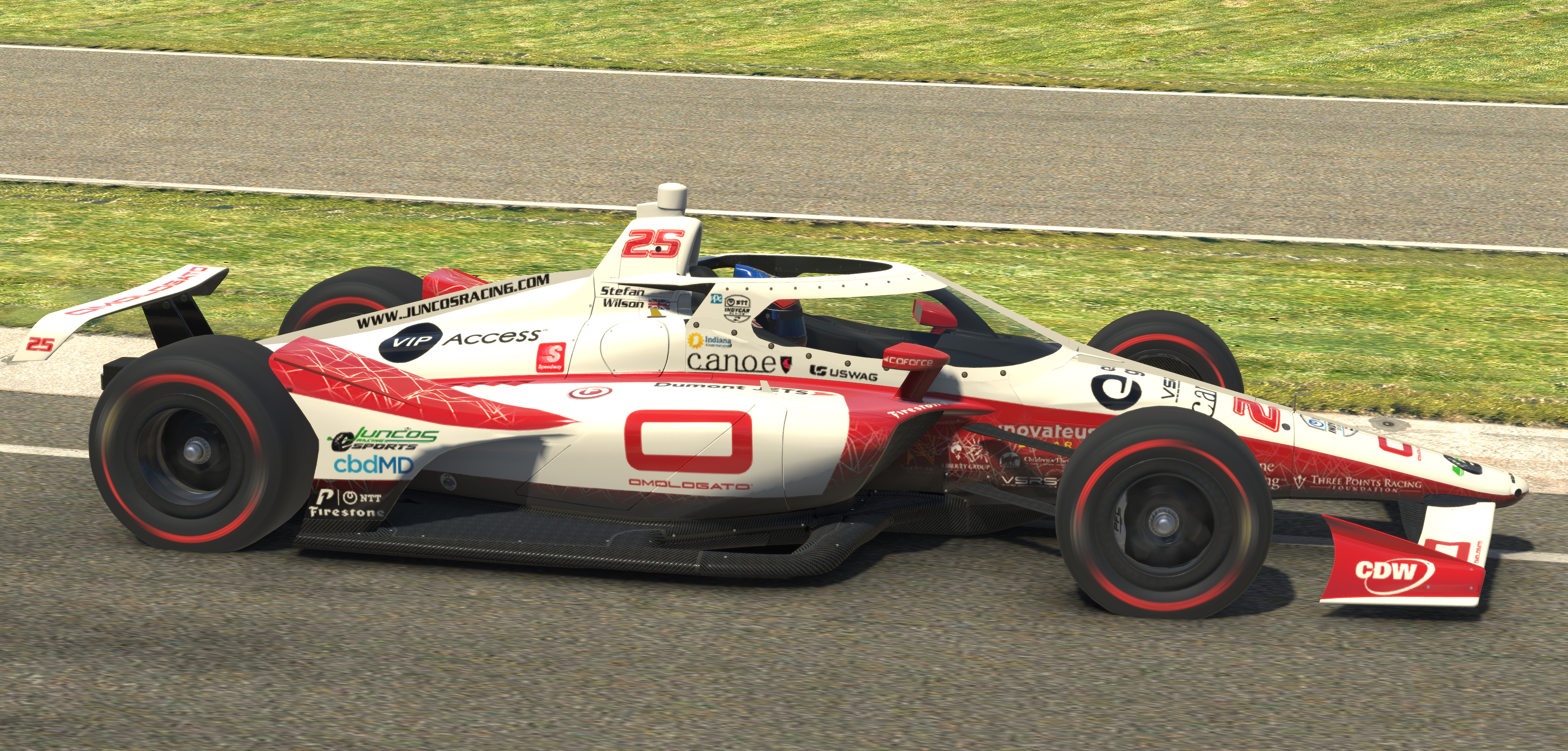
“At the same time, it still requires a sponsor to fund the team. In order for the team to put me in the car.
“So at the same time I’m out there pounding the pavement trying to drum up sponsor support and we’ve got one iron left in the fire, and I’m just waiting to see if that turns into something or it doesn’t…”
If his iRacing Challenge debut was anything to go by, Wilson can still be competitive. He was taken out in a crash but set the fastest lap during a wild race. And that was against drivers in sims worth as much as $30,000, while his was made at home out of wood!
He was coaxed into iRacing at the turn of the decade by Justin, and has broken a sabbatical to get back into simracing this year.
“It was a DIY sim really, Justin and I actually built it together back in around 2014,” recalls Wilson, who has recently added an extra screen and a new set of pedals.
“Its nickname is the battleship because it just keeps getting like little tweaks done to it here and there.
“The new pedals, that just made the biggest difference in my opinion. It’s just the equipment that’s available today compared to 10 years ago.
“The software is all there, but if you’ve got junk equipment, it’s not good. The actual pedals have just made a massive, massive difference to how much I enjoy it now, and how much more realistic it feels.”



